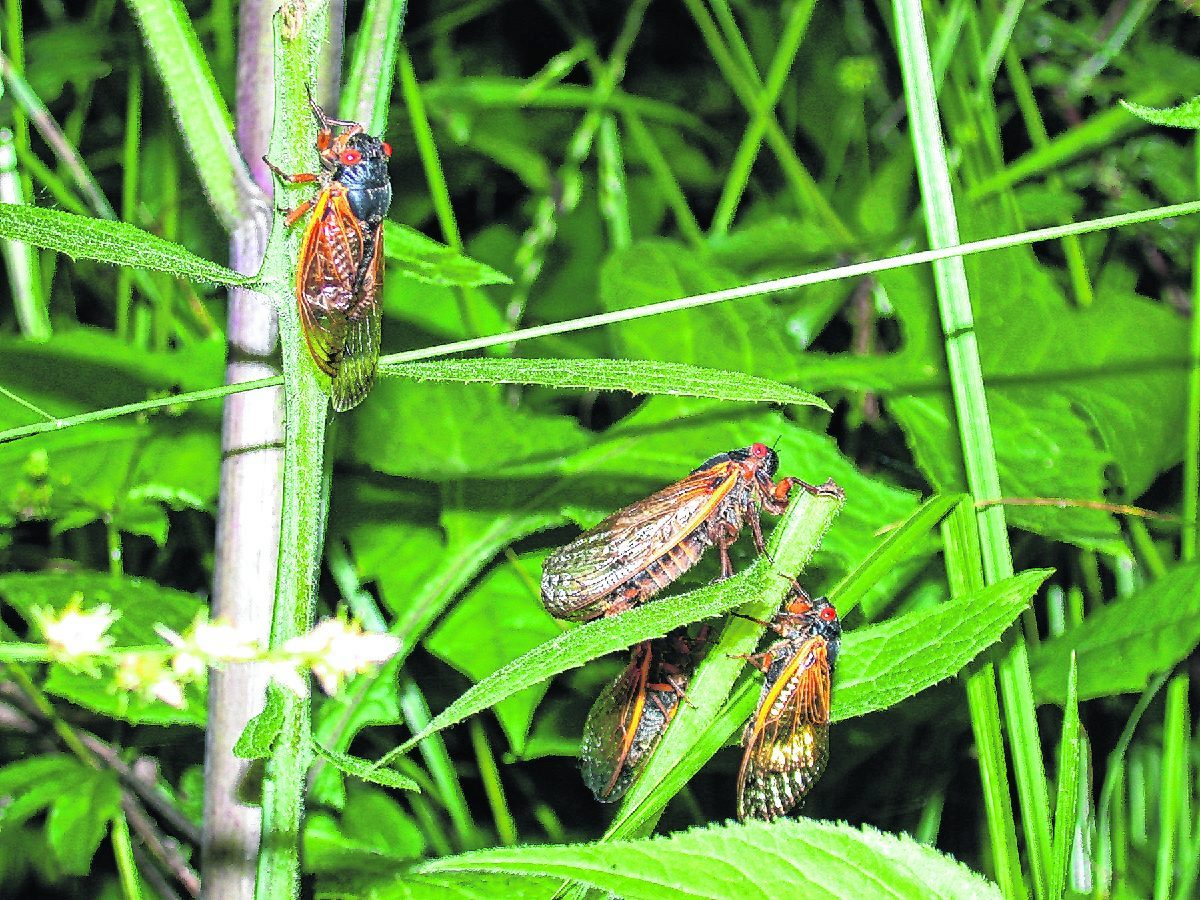
Sometime this spring, the Hoosier State — especially the south central part — will become the epicenter for a phenomenon that only occurs every 17 years.
The return of the Brood X cicadas won’t quietly announce their return, either.
Brood X — pronounced Brood 10 — is the largest 17-year periodical brood with billions of cicadas emerging from underground across 15 states, mainly in the eastern part of America, between March and June.
In Indiana, they’re expected to be in every county starting in late May, but the highest concentration of cicadas will be in south central counties, including Jackson.
They last emerged in the summer of 2004 and won’t return again until 2038. After emerging, adult cicadas are expected to hang around for about six weeks.
Clifford S. Sadof, an extension entomologist with the Purdue University Department of Entomology, said periodical cicadas are “about one and half to two inches long and have black bodies, reddish legs, wing margins and eyes.”
Female cicadas don’t make any noise after emerging, but the males are different story.
So when members of Brood X start emerging, the males will produce a loud, high-pitched scream to attract the females. They are able to do this by vibrating a membrane that’s located on either side of their abdomens, Sadof said.
Using a knife-like organ called an ovipostor, female cicadas cut a slit in twigs to have a place to lay eggs. The eggs hatch in approximately six weeks. The nymphs then drop to the ground, move into the soil and eat on underground roots and suck sap off of them. This will happen for 13 or 17 years until the nymphs emerge as adults and start the process all over again.
The cicada egg-laying process damages trees when branches die and break off trees after they are cut by female cicadas. The female cicadas mostly lay eggs in oak and hickory trees, flowering fruit trees and mountain ash and grape trees. About 400 to 600 eggs are laid from the females.
Cicadas are more prevalent in places with trees containing eggs from the previous cicada generation.
Despite the sounds made by the males and the damages to the trees, cicadas aren’t all bad.
After emerging, they provide a food source for some animals, such as birds and squirrels. Even though there are many natural predators for cicadas, the overwhelming number of them outweighs the threat of predators completely eliminating them.
To prevent cicada emergence, don’t plant new trees in the fall before or the spring when cicadas are supposed to return. While cicadas are around, wait to prune until they’re gone, that way, dead branches from cicada interruption can be removed in the process.
Mesh screening can be used on small trees and shrubs to protect them from cicadas. Pesticides also can be used on small trees for damage control against cicadas, but use caution. If not used correctly, pesticides will kill beneficial insects off of trees. It is not recommended to use pesticides on large trees.
[sc:pullout-title pullout-title=”On the Web” ][sc:pullout-text-begin]
To learn more about Brood X, visit extension.entm.purdue.edu/publications/E-47/E-47.html
[sc:pullout-text-end]
